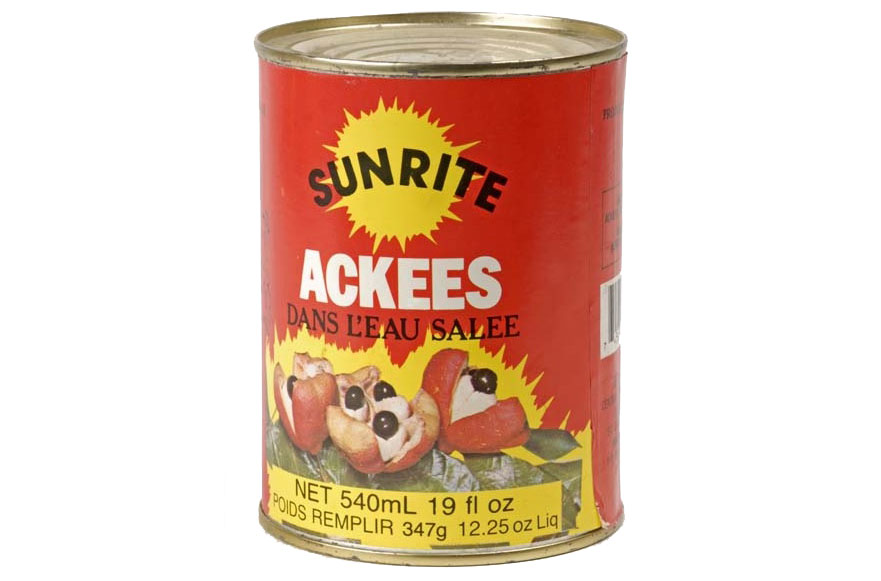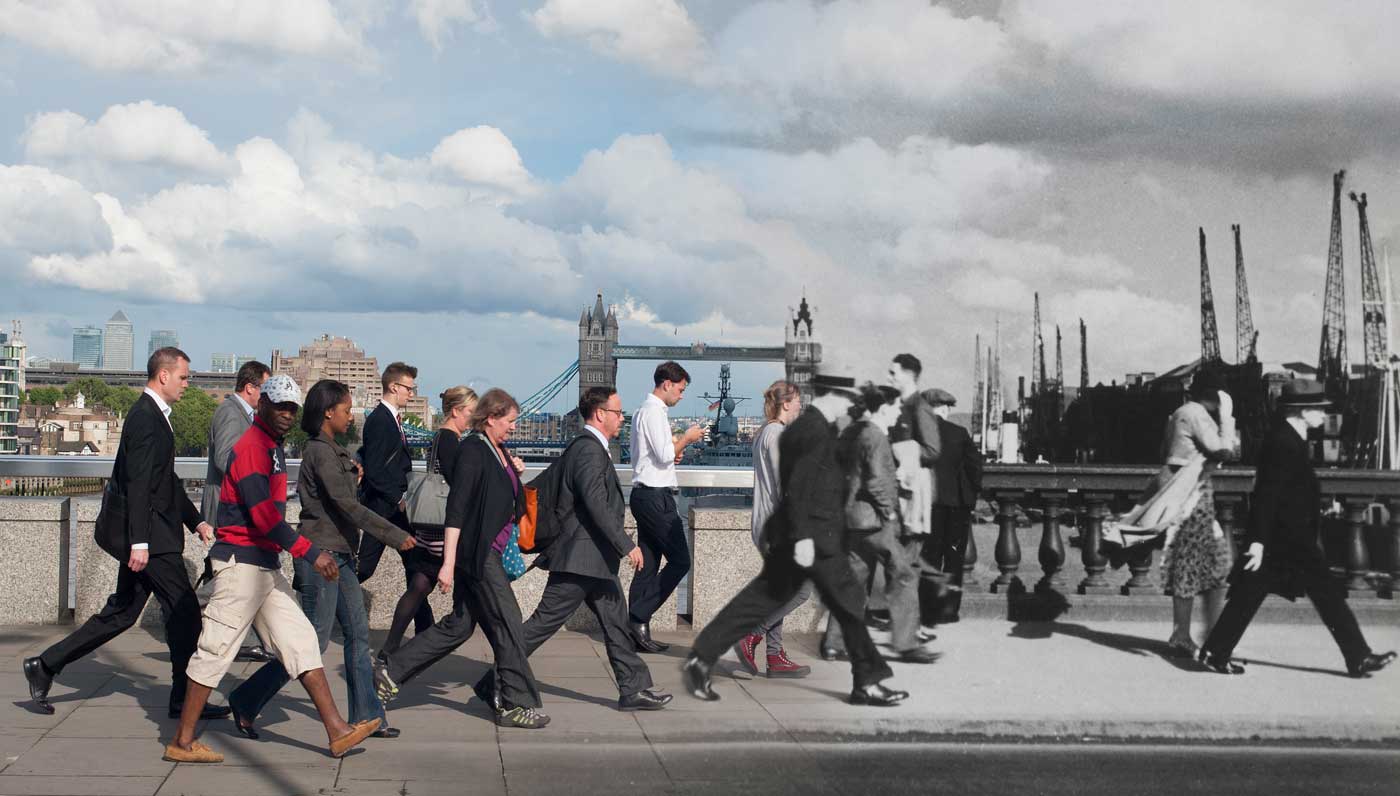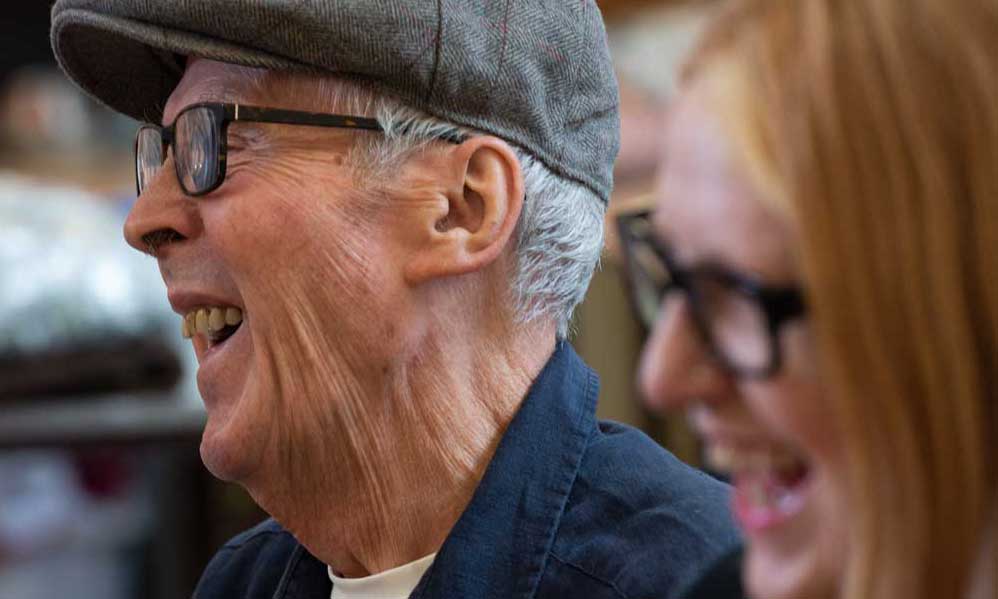- Creative & Connected – January 2021
- Creative & Connected – December 2020
- Creative & Connected – November 2020
- Creative & Connected – October 2020
- Creative & Connected – September 2020
- Creative & Connected – August 2020
- Creative & Connected – July 2020
- Creative & Connected – June 2020
- Creative & Connected – May 2020
London Lives: From Curry to Carnival
This episode of our London Lives podcast series is inspired by the fantastic world of food and identity. Discover delicious family delicacies, stories of migration and the joys of Caribbean carnival.
The podcast
In this episode of London Lives, Amy and Marina, the Memories of London Programme Manager and Coordinator, forage through the fantastic world of food and identity, sharing captivating conversations with Londoners from different generations and backgrounds.
Inspired by a three-decade-old tin of dried ackees in the Museum of London collection, we weave our way through different London lives to discover delicious family delicacies, stories of migration and the joys of Caribbean carnival.
Click on the white arrow in the orange circle below to play this episode.
With great thanks to the following contributors for permission to share their stories and work:
- Nafisa and Saami
- Hubert and Thelma
- Kamlesh, Sally and the rest of the team at Ashford Place, Brent
- Atiba for his vibrant poem
- Delphina James for providing the steel pan music
- Aleema Gray, Community History Curator at the Museum of London Docklands
The transcript
[podcast begins]
[♪UPBEAT MUSIC♪]
[00:00:17]
Amy:
Hello everyone and welcome to our podcast: London Lives. My name is Amy.
Marina:
And my name is Marina, and we’re joining you from the Museum of London today.
Amy:
And we are gonna be talking all about food, identity and where you’re from, but first of all… I can hear something…
[PAN SIZZLING]
Mmm, what are you cooking there, Marina?
Marina:
You are absolutely right, Amy.
My sausages are actually sizzling ready for my dinner this evening because tonight I’m having one of my favourites, which is sausage and mash! I absolutely love sausage and mash, I’m not sure about everybody else? But, there is a life-long debate in my household, ever since I was young because while I always have sausage, mash and peas, and of course gravy, my family – my parents – have always had sausage, mash and baked beans. But I hate baked beans!
[LAUGHING]
Amy:
I’d forgotten you hate baked beans! I really love baked beans. I loved having baked beans with fish fingers, when I was a child, or baked beans on toast – that’s another favourite dish. And I am trying to convince my son to like baked beans, but at the moment he is on your side, Marina.
Marina:
He knows what he’s doing, I think!
Amy:
It is funny that some people like some things, and some people don’t like other things. It’s just the way we’re made, I guess.
Marina:
Absolutely – for instance, I find it very funny, Amy, that you don’t like popcorn!
Amy:
I know, I know. It is quite strange. But what is even stranger, is although I don’t like the taste – it’s something to do with the texture, I think – I do love the smell. The smell takes me right back to, as a teenager, going to the cinema. I used to go a lot – I still go today when I can. And it reminds me of walking straight in through the door to the cinema. I really love the smell. Another thing where I love the smell but I don’t like the taste – well, it’s more of a drink – is coffee. I love the smell of coffee beans, but ugh, I really don’t like to drink coffee. It’s very strange.
But we have been talking this month to a lovely family – Nafisa and Saami, who have been telling us all about what they love to eat. Now Saami is eight years old, and Nafisa is his mum. They told us what they liked to cook and eat for comfort.
[♪UPBEAT MUSIC♪]
[00:03:07]
Saami:
My favourite food, I must say, is actually biryani, with that nice mint yoghurt sauce, with cucumbers and onions. It made me feel happy and full and reminds me of summer dinners. The colours also remind me of summer too.
Nafisa:
Yeah, it’s quite colourful with all the tomatoes and if you dress it up nicely. So, what is biryani, for our listeners who may not be familiar with this dish, Saami?
Saami:
Biryani is basically a dish where the rice is cooked in a meat or chicken curry. And it tastes delicious with a cold yoghurt sauce, and I absolutely love it.
Nafisa:
This yoghurt sauce is called raita. This meal goes really well with a nice, cold fizzy drink, in my opinion.
Saami:
Yes, definitely.
[♪UPBEAT MUSIC♪]
[00:04:00]
Marina:
I really love the way that Saami and Nafisa describe the biryani, and I love the idea of him eating his mum’s homemade biryani as well. But my favourite part of that recording is how they describe the colourful food. Now, for me, colour is so important in food. Food has to look nice for it to taste nice. And one of the most colourful foods I know is watermelon. I love how bright red and juicy the inside is, and how the outside is different colours of green. And watermelon always reminds me of when I’m on holiday, because I will always go for a slice of juicy watermelon on the holiday buffet.
Amy:
Mmm, yeah, watermelon is brilliant, especially when it’s really hot weather. It’s really refreshing, isn’t it? I love different colours of food as well, and red reminds me of my mum’s homemade tomato soup, which I really loved as a child. And so much so, I now have the recipe and I make it myself for my family. But there were some foods that my mum used to make which I really didn’t like. So my mum is from Scotland – she is from the north of Scotland – and about once a year she used to make the traditional Haggis. Now, I’m sure today I would think it was lovely, but when my brother and I were little, we used to run around the house shutting all the doors because we thought it smelt so horrible, and refused to eat it. Our poor mum!
But it is interesting how food can be so closely connected to where you come from – the countries you come from – and your identity. And Marina, I know you discovered something new in our collections recently.
Marina:
I did. So, very recently, I found a tin of ackees on our collections online. And I found it really interesting because ackees are the Jamaican national fruit, and yet I know nothing about them. In fact, they actually come from the Jamaican national dish as well, which is ackees and saltfish. And although they’re fruit, they actually are used in this savoury dish. So, we were really interested in that, and when we wanted to find out more, we thought it would be great to talk to someone from the Caribbean community.
Amy:
So, Marina and I have had a lovely time this month chatting to Hubert and Thelma. Now, Hubert and Thelma go to Ashford Place in Brent, and we had a fantastic chat to them all about food, but also about their immigration from Jamaica and what they first thought of London when they arrived many years ago.
[♪UPBEAT MUSIC♪]
Hubert:
Well, I am from Jamaica in the parish of Manchester in a little district called Bombay – B-O-M-B-A-Y. And Thelma is from Saint Thomas.
We heard about this great London and also at that time our – the governor of Jamaica – was Sir Hugh Foot. And we call it then the mother country – that was what we were told. It was the mother country, so everybody was excited to see what the mother country looks like.
In Jamaica the only thing we had with this chimney was the bakery, so I thought there were lots of bakeries when I saw all these chimneys!
Marina:
In our collection, Hubert, in the museum, we have a tin of ackees. I think I’m saying it right? And so, I don’t really obviously know much about them. It just says ackees are a fruit eaten with savoury foods and it’s the national fruit of Jamaica.
Hubert:
It is.
Marina:
And a component of the national dish of ackee and saltfish. I’m just wondering if you like that?
Hubert:
Yeah, yes! Up to… I have a lady who comes and do the ironing and she do some cooking for me. Up to Thursday she was here – she cook me some ackee and saltfish.
I like – I like the salmon when it’s well done, and she’s good at doing them – she used to be good at doing the salmon. It’s not too dry and it’s not too salty. She was good at gauging it and all that. And the average West Indian rice and peas and curry goat and all that – all those, everything she could do.
Now we are Londoners. Because we only go Jamaica now and then when we used to – when we used to travel – only now and again we go to Jamaica. So, we are Londoners if we're here 60-odd years.
[♪UPBEAT MUSIC♪]
[00:09:35]
Amy:
It was such a pleasure to talk to both Hubert and Thelma all about their fascinating lives. I loved hearing all about their arrival into London, and I must admit, I was very much taken with the story of the chimneys. And I would be very excited if there were that many bakeries around London – I’m rather partial to cake and bread, so that would be very delicious. But it was also lovely to hear what they like to eat, what they don’t like to eat. But also, lastly, I loved hearing about their sense of identity as a Londoner, having lived here for so many years. We found that fascinating, didn’t we, Marina?
Marina:
Definitely. I really loved speaking to Hubert and Thelma, and so much so, that we did decide to continue the conversation with one of our colleagues at the Museum of London Docklands, called Aleema. And Aleema really talked not only about the historic side of Caribbean migration, but also about her own personal identity and experiences. We also decided this month to commission a poet, and Atiba has created some poems for us around his Trinidadian identity, which also talk about Notting Hill Carnival and its roots in Caribbean culture.
[00:10:58]
Aleema:
Hello, my name is Aleema – Aleema Gray, I am the Community History Curator at the Museum of London Docklands, with a particular responsibility for the London, Sugar and Slavery gallery. And it’s a real pleasure to be able to contribute to some of these discussions, not only as someone who is professionally involved in looking at some of these histories of migration within the heritage sector, but also someone who has access to this lived realm, and being the living – I guess – testament to London’s multi-faceted histories of both forced migration and migration, being that I was born in Jamaica and came to London with my family as a child, and my grandfather was part of the Windrush Generation as someone who came to London, worked as a tailor, married my grandmother who happened to be British. So, when I’m looking at some of these legacies around identity formation in London, I can’t help but draw on my own experiences of coming here and being here and my own experiences of listening and observing the life of my grandparents.
[♪STEEL PAN MUSIC – DELPHINA JAMES♪]
Atiba:
As we engulf in the energy
of the legacy
that the Caribbean isle
brought to the British shore.
From carnival to culture
We gave our all
We fought for more
Seeing our faces appear on the front of The Times
We hail our heroines and heroes
They strive to create a path
So we can follow in their footsteps
We brought over the steel pan
Colours, flags, costumes, masquerades
We brought energy to the Notting Hill streets.
[♪STEEL PAN MUSIC – DELPHINA JAMES♪]
[00:12:57]
Aleema:
So, when I’m looking at something such as carnival, and particularly Notting Hill Carnival, for me it sort of represents this meeting point of everything that history could not have taken away from us. And it’s important to know that carnival had came about as a response to the same terrible race relations. In fact, the first carnival that took place in 1959 led in to over 100 people being charged.
And so, when we think about – when I’m listening to Atiba’s poem – and when I’m looking at some of our collections at the Museum of London – some of the colourful representations of these joyful pictures, that celebrating food and dances and music - we can really witness how a community has risen and continues to rise against the odd. And this, for me, is what makes London such a fantastic, interesting city to capture.
[00:14:08]
[♪STEEL PAN MUSIC – DELPHINA JAMES♪]
Marina:
Wow, it was great to hear from Aleema and Atiba. I loved Aleema’s perspective, but I also loved how energetic Atiba’s poem was. You can tell just how proud both of them are of the Caribbean community in London and their roots within it.
Amy:
Yeah. Absolutely Marina. I think it’s amazing how today’s conversation started with popcorn and baked beans and talking about food, and has taken us all the way to today’s society, to race relations, to carnival, to celebrations and not forgetting all the amazing stories from Hubert and Thelma about their migration here from Jamaica. It’s been such an interesting conversation and a really important one too.
That is about it from Marina and I. We’ve been so pleased to have you with us today and we look forward to being with you again next month, where we will be talking all about entertainment. But before we go, Marina has an important reminder.
Marina:
I do indeed have an announcement! So, please remember to join us for our Zoom session on the 9th of September from 10:30am as we discuss all things food, glorious food. We’ll be singing, we’ll be reminiscing and we’ll be taking a look at some Museum of London objects.
Amy:
Ooh, I can’t wait. There’ll be lots and lots of fun and we promise you a bit of a sing-song, even if we can’t sing that well! But to register, please do email us. Our email address is [email protected]. But for now, thank you so much for joining us and we hope to see you at our Zoom session or next month at our London Lives podcast. It’s goodbye from me, Amy.
Marina:
And goodbye from me, Marina.
[00:16:20]
[♪UPBEAT MUSIC♪]
[podcast ends]
Creative & Connected
This podcast is just part of August's creative activities for people affected by dementia, their carers and loved ones. You can find the rest of this month's content here: Creative & Connected - August edition










